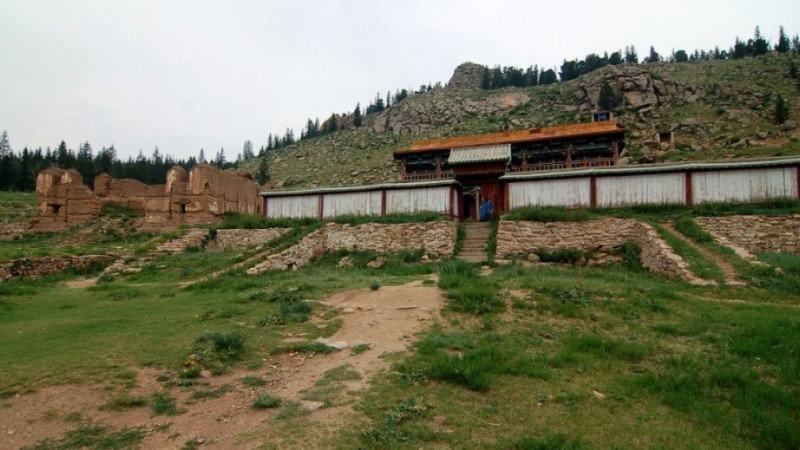Hustai National Park

Hustai National Park
Hustai National Park is one of three locations selected for the reintroduction of the Przewalski’s horse, or Takhi, since 1992. It is located 90 kilometers southwest of Mongolia’s capital, Ulaanbaatar. The park’s landscape is diverse, containing both desert and mountainous zones, with the Tuul River running through it.
The park is known by two names:
- Khustain Nuruu National Park – meaning “the range of birches.”
- Hustai – which translates to “place with birch trees.”
Both names reflect the park’s stunning birch-filled landscapes and rich natural beauty.
Management and Conservation
Hustai National Park is managed by a non-governmental organization (NGO) and is entirely self-financed, without any state subsidies. To support its conservation efforts, the park has developed a range of ecotourism initiatives, including entrance fees, accommodations, souvenir sales, and donations. All revenue generated directly contributes to the reintroduction program for the Przewalski’s horse, as well as other conservation and research projects within the park.
Best Time to See Wild Horses
For the best chance to see wild horses, we recommend visiting at sunrise or sunset. During the heat of the day, the horses tend to retreat to the mountaintops, making them harder to spot. However, as the sun sets, they move down to the foothills, providing a perfect opportunity for closer observation.
Historical and Cultural Significance
Along with its abundant wildlife and breathtaking landscapes, Hustai National Park is home to historical sites of significant conservation value. The park contains ancient deer stones, burial sites, and stone carvings that date back to the Bronze Age and the 7th-century Turkic period.
History of Hustai National Park
- 1977 – Three Dutch charities established the Foundation for the Preservation and Protection of the Wild Horse.
- 1988 – The foundation identified a suitable 24,000-acre steppe reserve in Mongolia for the reintroduction of wild horses.
- 1990 – The reintroduction project began.
- 1992 – The first group of 16 horses was transported to Mongolia.
- 1993 – Hustai National Park was designated a Specially Protected Area, one year after the reintroduction program began.
- 1994–2002 – Additional transports of horses continued, bringing more to the park. Horses were carefully selected for genetic diversity, raised in semi-reserves in the Netherlands, and transported to Mongolia once they had formed stable social herds.
Facts About Takhi (Przewalski’s Wild Horse)
Takhi wild horses live in two types of social groups:
- Family groups – Typically consist of one stallion, three or four mares, their foals, and yearlings.
- Bachelor groups – Comprised of stallions only, usually led by older males.
The Story of the Takhi Wild Horse
- 1878 – Russian explorer Colonel Nicolai Przewalski returned from an expedition to Central Asia with the skin and skull of a wild horse. He presented his findings in St. Petersburg, confirming the existence of wild horses in southwest Mongolia. The species was later named the Przewalski’s horse, known in Mongolia as the Takhi. He described that the horses were highly alert, with acute hearing, excellent eyesight, and a strong sense of smell.
- Late 19th Century – News of the discovery spread across Europe and America. Wealthy landowners and collectors organized expeditions to capture these rare wild horses.
- 1897 – The first capture attempt failed.
- 1898 – Two foals were caught but could not be successfully raised. Later, seven more foals were captured, with the help of local herders who used domestic mares as surrogate mothers. These horses were distributed among European zoos and private reserves. Today, all living Przewalski’s horses descend from just 13 of these original ancestors.
- Pre-WWII – The wild population remained stable.
- Post-WWII – The number of wild horses dropped sharply.
- 1967 – The last wild herds disappeared from southwest Mongolia.
- Zoo Breeding Challenges – Breeding Przewalski’s horses in captivity was difficult due to limited genetic exchange, which led to diseases and declining birth rates.
- 1977 – Three Dutch charities established the Foundation for the Preservation and Protection of the Wild Horse. At that time, only 300 individuals remained in captivity.
Attractions in Hustai National Park
Ungut Monument
One of the park’s key historical sites is the Ungut Monument, a 7th-century site from the Turkic Khaganate period. It is the largest collection of man stones (carved stone figures) in Mongolia and Central Asia.
The site is enclosed by an earthen mound measuring 55 by 38 meters, which archaeologists believe served as a ceremonial offering site for a nobleman. Excavations at the site uncovered:
30-man stones, each depicting a figure with hands placed on the chest as a sign of respect.
13 wooden pole bases and building materials, including roof tiles.
Over 550 balbal stones, arranged in a line extending 2 kilometers eastward, symbolically pointing toward the sunrise.
Ungut Monument is within a day-trip distance from Ulaanbaatar and many visitors combine a stop here with a wild Takhi (Przewalski’s horse) observation tour in Hustai National Park.
Destinations
similar contents
 Genghis Khan's Statue Complex
Genghis Khan's Statue Complex
Visit the world's largest equestrian statue honoring Genghis Khan near Ulaanbaatar, featuring museums, panoramic views, and cultural attractions.
Why travel with us?

Travel by heart
When you travel with us you make a meaningful contribution to the environment and support of the local communities.

Best customer service
We know how important and special your holiday is and will be there from the time you enquire to the day you go back home after your trip to make sure it surpasses your expectation

Best tour plans
Our clients' satisfaction is our priority. Our itineraries are designed just for you. including carefully curated experiences, handpicked expert guides and quality vehicles.

Total Flexibility / Free Cancellation
Free date changes and cancellations up to 31 days before departure on most trips.







